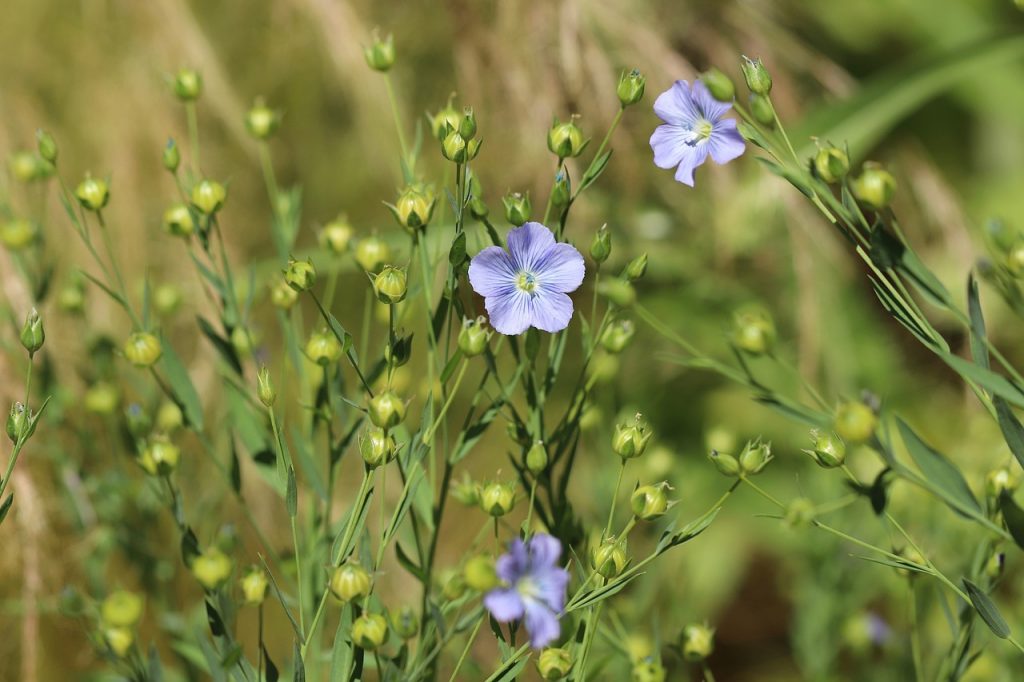
Plants, being static organisms, need to continuously and effectively protect themselves from adverse conditions such as attack by herbivores, pathogens and environmental stress. To do this, they have evolved the ability to produce special molecules (secondary metabolites) with a defense function. These substances have also proved to be useful for the treatment of various human pathologies.
Considering the growing interest in health and the lengthening of the life expectancy of the population, the demand for effective medicines is constantly increasing. In fact, it should be emphasized that around 75% of medicines and 60% of chemotherapy used today are natural products, their analogues or in any case deriving from plants or microorganisms.
Flax is a medicinal plant belonging to the Linaceae family which has been cultivated since ancient times both for its fibers, from which fabrics, paper, cordage are obtained, and for its seeds, from which flour and oil are obtained , used both as a food supplement and as an ingredient in the wood and paint industry as well as in the cosmetics industry.
In recent years, the interest in flax has grown further thanks to the production of particular secondary metabolites called lignans which show interesting pharmacological activities. The more than 230 species that belong to the linen genus are divided into three classes on the basis of the type of lignano they produce. The species belonging to the first group produce lignans of the podophyllotoxin type (PTOX), for which an effective cytotoxic and antiviral activity has been demonstrated, so much so that, although the chemical synthesis of PTOX is possible, pharmaceutical companies continue to prefer its extraction from natural sources.
The flax species belonging to the second group produce lignans of the justicidin B type, a highly cytotoxic molecule identified for the first time in 1965 in Justicia hayatai var. decumbens. Numerous properties were subsequently attributed to this molecule, such as fungicidal, antiviral, antibacterial, antiparasitic, piscicidal, anti-platelet and anti-inflammatory activity.
Finally, the third group includes those species of flax which specifically produce lignans of the secoisolaricylresinol diglucoside (SDG) type, considered a nutraceutical compound of considerable importance as a precursor in the synthesis of enterolignans, metabolites produced by the human intestinal microflora which show preventive activity towards various types of cancer and cardiovascular disorders.
However, the most limiting factor for obtaining these compounds from plants is the low quantity in which they are produced (less than 1% of dry weight). It should also be kept in mind that some of the plant species that produce them are endangered, also due to excessive exploitation. The challenge is to find more effective strategies for obtaining these secondary metabolites while respecting “rare” plant species and trying to free ourselves from the vegetative cycles of the various species. A possible solution, as already mentioned in the case of podophyllotoxin, is represented by chemical synthesis, a choice which has often proved to be economically disadvantageous and in many cases does not allow maintaining the correct stereochemistry of the molecule, which is fundamental for its pharmacological activity. Another strategy is based on obtaining bioactive compounds from in vitro cell and tissue cultures.
In vitro cultures
The in vitro cultures constitute a biotechnological approach which is based on obtaining in a sterile environment cultures of dedifferentiated cells or plant tissues (such as, for example, cultures of adventitious roots or aerial roots (hairy roots) from a certain plant species known for synthesize compounds of interest.The main advantages of this technique consist not only in the possibility of obtaining metabolites without geographical limitations and freeing oneself from the vegetative cycle of the species (which allows to obtain a lot of material in a short time), but also in obtaining crops free of bacterial and/or viral contamination. Furthermore, this strategy makes it possible to protect endangered plant species.
In the laboratories of the CNR-IBBA, during the InFlaMe project “Improvement of secondary metabolites production for human health by flax cell in vitro technology”, financed by the Cariplo foundation, this technique was exploited to produce lignans of therapeutic interest starting from flax plants . In particular, the chosen biotechnological approach followed four fundamental steps: i) selection of the most productive genotypes in terms of secondary metabolites; ii) production of in vitro cell and tissue cultures (adventitious roots and hairy roots) starting from these genotypes; iii) elicitation: method which involves the addition of endogenous molecules (methyljasmonate and coronatine) which mimic stress and which therefore induce the plant/tissue to produce a greater amount of bioactive compounds; iv) production scale-up on a small 1 liter bioreacto.
The most interesting results were:
Authors: Monica Mattana, Iride Mascheretti, Roméo Dougué